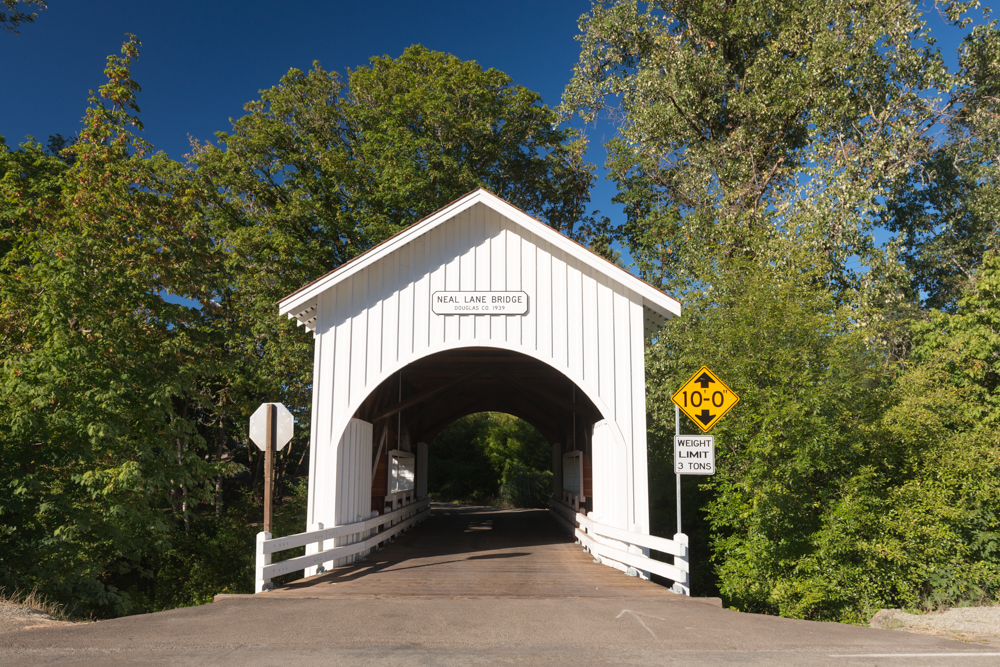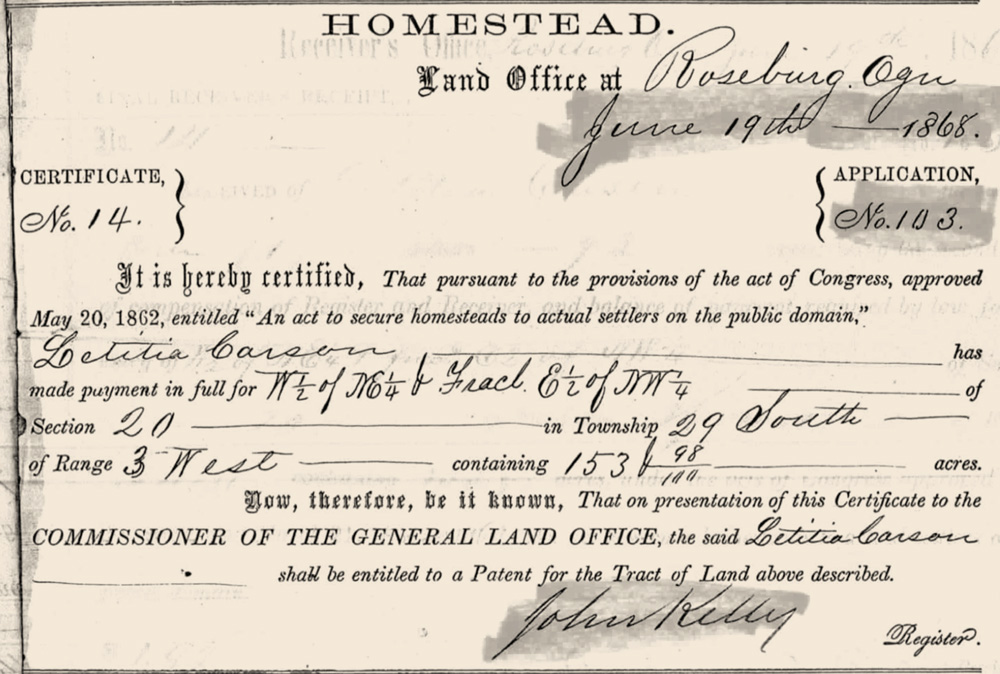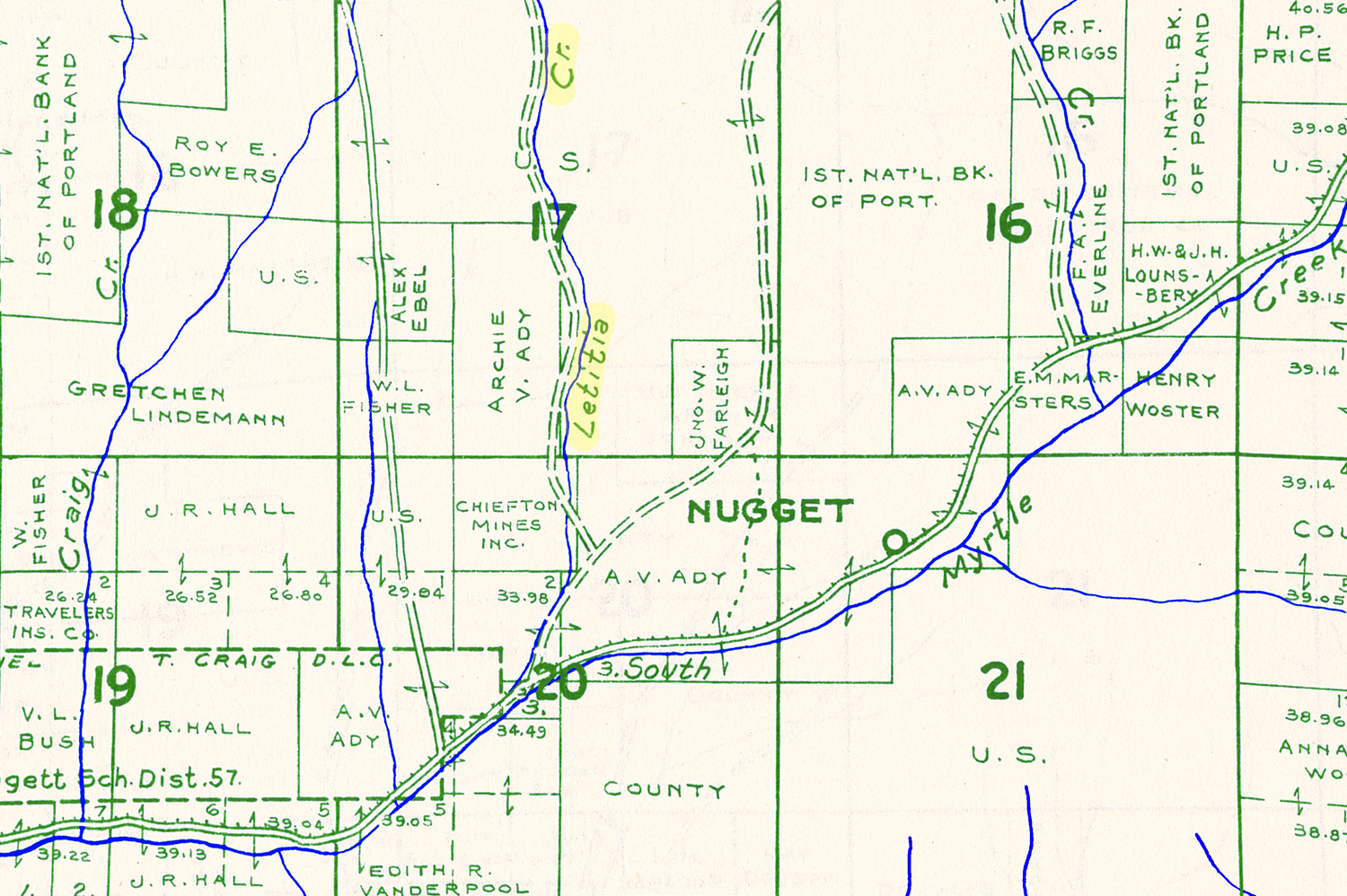 Letitia Carson filed a land claim on South Myrtle Creek in Douglas County. Shown above is the Neal Lane Bridge over South Myrtle Creek. (Oregon Scenic Images collection)
Letitia Carson filed a land claim on South Myrtle Creek in Douglas County. Shown above is the Neal Lane Bridge over South Myrtle Creek. (Oregon Scenic Images collection)
Letitia Carson (circa 1815–1888)
Letitia came to Oregon as a slave or former slave in 1845 with David Carson. She gave birth to a daughter, Martha, while travelling to Oregon. Soon after arriving in Oregon, the family settled into a cabin they built on a 640-acre land claim. A son, Adam, was born in 1849. The next year officials reduced Carson’s claim to 320 acres, most likely because David and Letitia were not married. The Donation Land Act provided 640 acres for married couples only.
David Carson died in Benton County in 1852, and in February 1854, Letitia filed suit against the executor of the estate. According to her filing, David had promised that if she would live and work for him during the remainder of his life "he would make me his sole heir or that he would give me his entire property" upon his death. However, this was not put in writing. Letitia went to court seeking $7,450 for seven years of work, plus the value of livestock and other property to which she claimed she was entitled.
 Letitia Carson's Homestead certificate.
Enlarge certificate
Letitia Carson's Homestead certificate.
Enlarge certificate According to Oregon’s exclusionary laws, Black immigrants were not allowed to own land, file suit, or even reside within the Territory’s boundaries for more than six months. Yet Letitia sued David’s estate twice in a Benton County court in an effort to recover an equitable portion of their property for herself and her children. On May 12, 1855, a jury of Letitia Carson’s former Benton County peers (all white males) determined that Letitia was due $300 for her services to David Carson and another $229.50 to cover court costs and legal fees. Sixteen months later, on October 25, 1856, a federal judge and local jury awarded her an additional $1399.75, including $199.75 for costs and fees, for the unlawful sale of her cattle.
 A map showing Letitia Creek in Douglas County.
Enlarge map
A map showing Letitia Creek in Douglas County.
Enlarge map Sometime after the settlement of the suit, Letitia and her children moved to Douglas County. For many years she reportedly made her home with the Hardy Elliff family in the upper Cow Creek Valley, where she worked for the Elliff family and also served as the community midwife.
In May 1862, U.S. President Abraham Lincoln signed the Homestead Act into law. That law did not bar, by race, who could be homesteaders. On June 17, 1863, Letitia Carson filed a claim for 160 acres on South Myrtle Creek in Douglas County, Oregon. She filed as a "widow" and single mother of two children. Although the Act included "freed slaves," Letitia didn’t identify herself as such. On October 1, 1869, Letitia Carson's claim was certified by President Ulysses S. Grant, making her the only Black woman in Oregon to successfully secure a claim. Letitia’s ranch included a two-story house, barn, smokehouse, cattle, pigs, and an orchard of over 100 fruit trees. The 1870 census lists her real estate worth $1,000, and personal property as $625.
Letitia Carson died February 2, 1888 and was buried a few miles from her homesteaded property at The Stephens Cemetery in Myrtle Creek. A Light in the Wilderness, a historical novel written by Jane Kirkpatrick in 2014 and based on the facts of Letitia Carson’s life, was published.
View the 1854 Benton County court notice from Leticia Carson related to a lawsuit against the probate administrator of the David Carson estate:
Page one |
Page two.